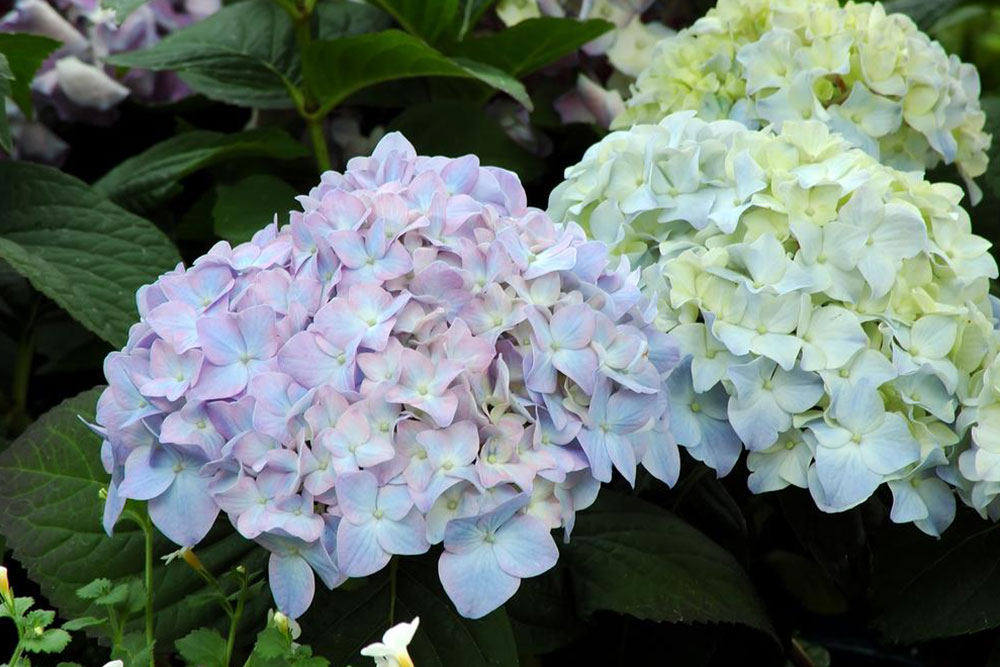Tips on how to plant and take care of hydrangea plants
Hydrangeas are flowering shrubs that come in a variety of colors including clear blue, vibrant pink, frosty white, lavender, and rose. They have a characteristic multiple flower head pattern, with each flower made up of many smaller flower heads. They are a very prominent variety of flowering shrubs that are easy to cultivate on almost any kind of soil. They produce flowers through the entire mid-summer and till fall. During this time most of the other flowering plants and shrubs do not flower, making hydrangeas very special. Hydrangeas can make an excellent garden as they can be planted as individual plants or as groups.

What makes them unique?
An interesting fact about hydrangeas is that the colors of some of the hydrangeas can change based on the soil pH. Soil pH indirectly affects the availability of aluminum ions. Blue flowers are produced with acidic soils (with pH less than 5.5) and pink blooms are produced with a soil pH greater than 5.5. It is seen that white flowers are not affected by pH.
Planting hydrangeas
Hydrangeas need to be planted about 3 to 10 feet apart, in rich and moist soils. Compost needs to be added to soils that are not moist enough. Planting needs to be done during spring or during fall.
Caring for hydrangeas
The leaves of hydrangeas will wilt if the soil is too dry. To avoid that, after planting or during dry weather, the hydrangeas should be watered properly. Though fertilizers are encouraged, it should be noted that too much fertilizer will cause leafy growth and lesser flowers. So, as a common practice, it is not required to fertilize hydrangeas if the soil is rich. If the soil is not very rich or is sandy, it is good to fertilize the plants once a year during late winter or spring. During the fall, cover the plants to a depth of 18 inches or more using pine needles, leaves or straw. However, it’s advisable to cover the entire plant by making snow fencing or chicken wire cages and filling the cages with leaves.
Pruning a hydrangea
Pruning is done by cutting one or two of the oldest stems down to the base so that branching can happen. But if the plant is old or neglected or damaged, it is advisable to prune all the stems down till the base. This also includes the flowers that will renovate the plant for future seasons. The process of removing faded and dead blooms is called deadheading. The process or the time to prune a hydrangea depends on the type of hydrangea. The technique varies from one variety to another. For example, Mophead and Lacecap, are two common varieties that are pruned after the flowers fade. Other hydrangeas like panicle and smooth hydrangeas are pruned in a different way. They should be pruned late winter when the plant is dormant before flowering. So, if the buds are killed during late winter, they will produce new buds in spring which will produce flowers. It’s a best practice to prune only dead branches.

